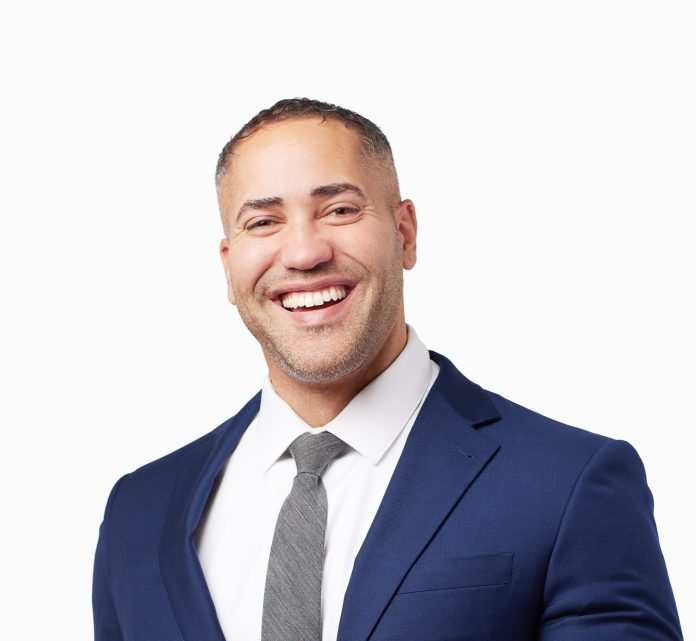Preston Anderson said he was inspired to run for Seattle City Council seeing firsthand the failure to adequately address homelessness and how it was affecting his patients, many of who are homeless veterans.
“So I’m a clinical social worker,“ Anderson said during a recent interview. “Been doing clinical social work for the last 12 years. Worked in social services for 15 years. And just to start on the front end, what motivated me to run has been personal experiences as a clinical social worker having lost several people either to overdose deaths or being out in the elements and dying from just being homeless. And seeing those trends increase over the last few years has definitely inspired me to run.”
Anderson is running in District 1, which covers West Seattle, SoDo, Pioneer Square, Georgetown, and South Park. He is one of three D1 candidates qualified for Democracy Vouchers along with tech lawyer Rob Saka and Maren Costa, a former Amazon executive fired due to her climate organizing — for more on that story check out our interview with Costa.
In all, eight candidate have filed to run in District 1, hoping to replace outgoing two-term Councilmember Lisa Herbold, who said she stepped aside hoping to hand the baton to a progressive — though she has not endorsed anyone yet. For more on the other candidates, check out The Urbanist‘s rundown of the race.
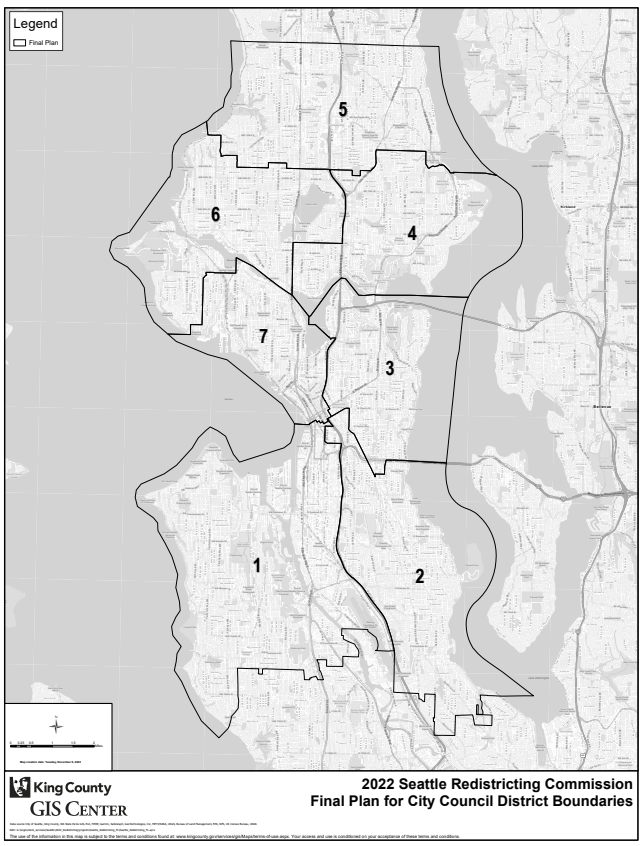
While the field of candidates is wide, Anderson is unique for his frontline work serving homeless people and his recommendations are informed by that firsthand experience.
“So as I’ve gone out in District 1, I’ve talked to hundreds of people as I’ve been door knocking and their main concerns: crime, the addictions crisis, and homelessness. And those three things are behavioral health and housing, all within my wheelhouse,” Anderson said. “And I think that sets me apart from the candidates running in this race in District 1. I’m the only individual that has clinical experience. And obviously, I didn’t become a social worker to make millions of dollars. I became a social worker to help people. And I’ve been consistent throughout my career of helping people, even before I became a social worker, in the army I was a medic helping people. So I think being in a helping profession sets me apart.”
As to what specifically he would change about a homelessness response, Anderson said that some of his patients will be discharged from a psychiatric setting to permanent supportive housing, but the supports provided are not always sufficient for their needs. A psychotic episode might lead to costly property damage causing them be out on the streets once more in a vicious cycle. Thus, he would like to expand housing programs with full wraparound services, such as those offered by DESC [Downtown Emergency Support Center].
“I would like to interrupt that cycle and you know offer a larger suite of clinical options for housing people,” Anderson said. “I kind of provide oversight for transition housing. Essentially that’s kind of a single room occupancy type of setting with a clinician and a case manager on site, 24-hour supervision. So those persons have the behavioral support they need. And I think we definitely need to grow out that piece of supportive housing. And DESC, they have some pretty good programs that do that, but we definitely need to invest more in areas where we’re supporting people that have very severe mental illness.”
Moreover, permanent supportive housing and other homelessness services should be better distributed across the city and region, Anderson argued.
“I would say to not just concentrate these programs within the downtown core area in Seattle,” he said. “People that do struggle with addiction or significant psychiatric disorders — and this is just from clients, you know, speaking with me — kind of lamenting on the fact that, you know, the only housing options that are available are located in areas where there’s a lot of dysfunction, a lot of crime, a lot of sexual exploitation, a lot of predatory behaviors. So they speak to the fact that they need to be out in places where it’s a lot more quieter, a lot more therapeutic for them.”
Zoning and social housing
Permitting greater housing density is part of Anderson’s vision for addressing homelessness and the housing affordability crisis.
“I think we are behind the times with regard to building up density and increasing more transit options and making communities more livable with greater pedestrian-friendly areas,” Anderson said. “We should be increasing density. We should be increasing density around transportation hubs and removing barriers like all parking requirements.”
Anderson didn’t indicate a specific preference among the five proposed Comprehensive Plan alternatives, but he did stress the importance of density and of standing up the newly launched public developer of social housing and “making sure that we’re prioritizing ways to make sure that it’s a durable program that’s going to be successful.”
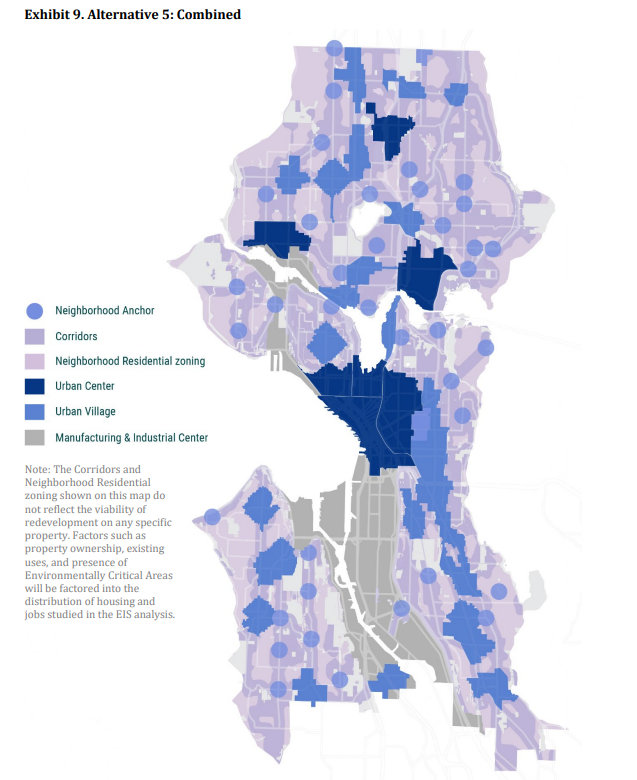
Anderson said he voted in favor of Initiative 135 (the social housing ballot measure), has spoken with Rep. Frank Chopp, who spearheaded the effort to provide initial startup funding in the state legislature, and he is interested in ensuring the program is adequately funded. Hoping to ensuring program success, Anderson suggested focusing on the middle-income segment to start and letting existing nonprofit builders continue to focus on extremely low-income households at the lowest bans of area median income (AMI).
“In order to make this model successful, in order to meet the vision that it’s set out to do with housing middle income people, I think it would be a reasonable thing to kind of discuss, initially focusing on the subsidy for people that are 60% to 120% to AMI, and then build it out backwards,” Anderson said. “But I think making sure that the subsidies are viable and that the overall funding for the program is going to be pretty important. So it’s a success and people can kind of rally behind that.”
Progressive revenue
Realizing that funding housing and other programs is essential, Anderson was clear going backward on progressive revenue was not an option for him. “To suspend the Jumpstart tax would be a non-starter,” he said. The Seattle Metropolitan Chamber of Commerce had proposed the Jumpstart “holiday” idea, supposedly as a downtown recovery measure, but it has not gained a ton of traction yet.
With respect with what new taxes he’d add, Anderson was more circumspect and hesitant.
“With regard to progressive revenue, I think it’s important first that we talk about a growing dynamic economy within Seattle, growing the economic pie to ensure that there are more sources of business and occupational taxes and sales taxes,” Anderson said. “I mean, the top three taxes are property levy taxes, sales tax and the business and occupation tax. And so I think [top] for me would be to ensure that we’re stimulating the local economy, that we’re providing opportunities for the local economy to become more dynamic and more resilient. And we’ll go from there.”
Pedestrian bridges and other safety ideas
Anderson expressed a desire to address the traffic safety crisis plaguing the city — with SoDo a hotspot for deadly crashes in particular. SoDo is a freight-heavy area serving the Port of Seattle with plenty of high-speed wide roads which makes a particular challenging problem to solve. Anderson suggests pedestrian bridges to offer a way over the mayhem might be the way to go, but he also gave a shout out to Leading Pedestrian Interval traffic signals that give crossing pedestrians a head start before car traffic — a recommendation from the City’s Vision Zero safety review.
“Where financially tenable, I think it’s appropriate to have pedestrian bridges that span over these four lane and six lane highways where appropriate, whether it’s something that would fit in budget, but those are potential solutions for SoDo though,” Anderson said. “I think one great thing we’ve seen [is] the delayed response for the traffic lights in as it’s timed with the pedestrian walk signs, that’s been a great addition. Something simple and something I think that’s been effective from what I’ve seen.”
Anderson said that curb ramps and other improvements geared at access for disabled folks would be a priority for him in the next Seattle transportation levy, which is due to be renewed in 2024.
“One thing I would like to focus on is building out more pedestrian friendly areas for disabled folks, ramps to street curbs, making the city more accessible to people that use wheelchairs,” he said.
Extending light rail to White Center and beyond
Anderson said the transportation levy could also be an opportunity to extend West Seattle Link light rail, picking up Westwood and White Center.
“In 2015, [Sound Transit] did a study of South King County and they were proposing a light rail line going from Alaska Junction, extending through Westwood all the way through White Center, then Burien and connecting to Tukwila. I think that has potential,” he said. “I haven’t seen anything discussed about it since. And I guess a lot of people must have of moved on from that, but that’s something I would like to revisit.”
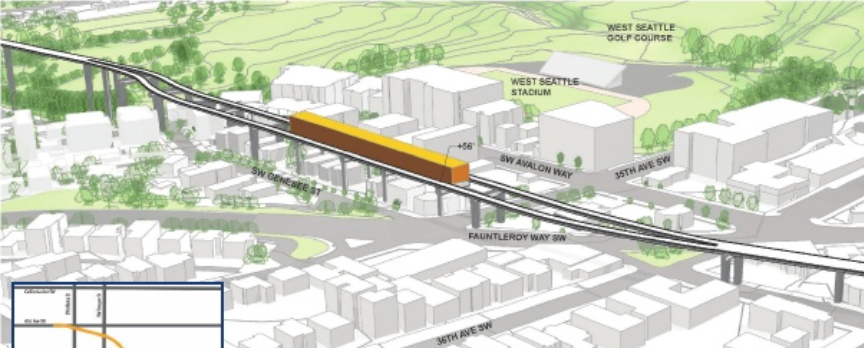
Anderson flagged the potential for housing growth and affordable housing additions that a light rail extension could spur, pointing out the potential in White Center, in particular.
“If you go down Ambaum [Boulevard] and 1st Avenue, there’s, I think, a lot of potential for growth. And so if you’re siding a transportation hub around that area, and you’re able to build up hundreds, if not thousands of units of affordable housing,” Anderson said. “I think that’s a win-win situation that the local government can get into funding and also regional governments can get into funding and it will connect the span that goes from downtown to the last of the West Seattle Junction all the way down to Tukwila and that would be, I think, a pretty solid transportation hub where growth can occur, where we can build out pedestrian friendly communities that are linked to public transportation. via light rail or electric bus lines.”
“Jury’s out” on Center City Streetcar
While a magnitude less expensive than light rail expansion, Anderson was less bullish about the Center City streetcar extension project, which has been shelved since 2018 due to opposition from Mayor Jenny Durkan and Councilmember Lisa Herbold. He said he’d like to see more studies.
“I think there needs to be a more thorough study on the benefits to the downtown core area and the neighborhoods that it will serve,” Anderson said. “And then also with streetcars, if any part of this section of the streetcars would be dedicated exclusively to just the streetcar itself versus having to compete with traffic… I think that’s a big complaint that, from what I’ve read in previous articles, that people have about streetcars sharing the street with traffic and not being much different or maybe even more restricted than buses. So I can’t really give you a definitive answer because… the jury’s out for me.”
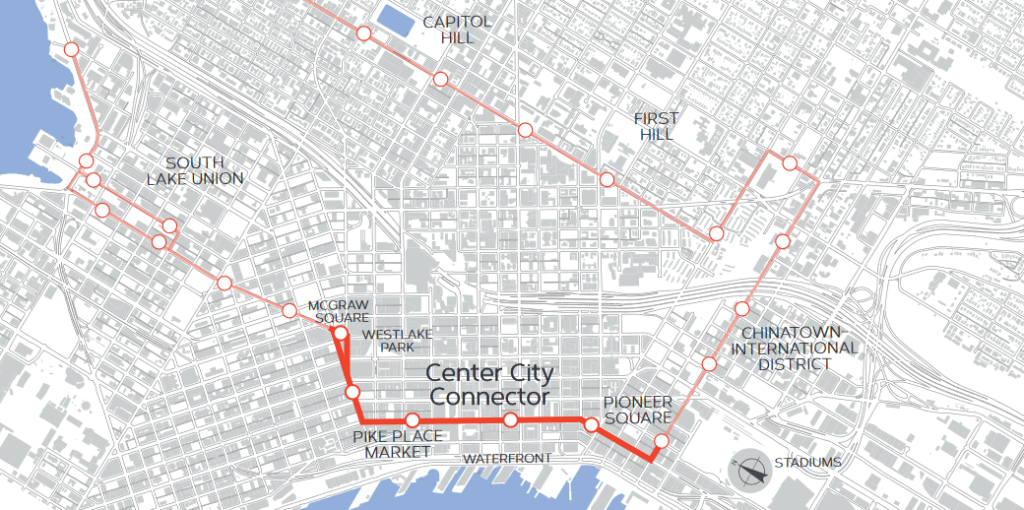
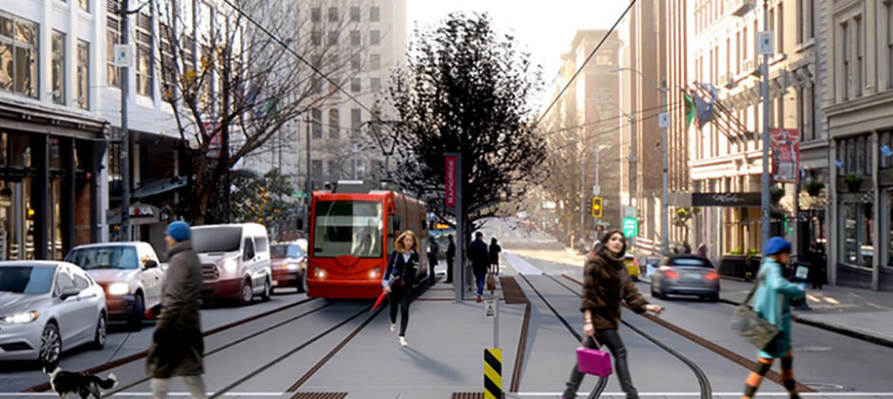
The Center City streetcar extension is planned to run on First Avenue primarily in exclusive transit lanes, but the existing First Hill Streetcar and South Lake Union Streetcar run in mixed traffic for significant portions — although the City could create transit-only restrictions if it so chose.
Microtransit and last mile solutions
Anderson brought his experience relying on the bus as a teenager and young adult which informed his stance that Seattle needs broader transit coverage.
“So growing up in Tacoma, up until the age of 23, when I got my driver’s license, I exclusively rode the bus,” Anderson said. “I know how challenging and frustrating it is that bus lines only go like a certain way or to a certain area and then it’s up to you to walk a mile or half mile or whatever the difference may be.”
While getting a last-mile solution that works and is financially sustainable has been challenging for King County Metro and the Seattle Department of Transportation, Anderson wants them to keep trying at it.
“To make it more appealing to get more people to ride, I think we do need those connections,” he said. “They need to be smaller type of transit options. So I think we can achieve that. And I would definitely want to explore what that would look like. So I’ll definitely fund a workforce group that would maybe explore with our partner, King County Metro, fielding smaller electric vehicles that are able to go to more neighborhoods.”
Community safety: alternative response and adequate police staffing
Anderson spoke about expanding civilian crisis response programs, but he is also a supporter of increasing police staffing.
“With the police, making sure that the police are adequately staffed, to ensure that they’re going to go out in community, that they’re safe in the sense that they’re not working multiple shifts over time and they’re not stressed out. And when you’re stressed out, you’re probably less likely to be able to deescalate a situation,” Anderson said. “So we need to make sure that the police are adequately staffed.”
Staffing shortages are not limited to police, however, Anderson noted, pointing to crisis response teams.
“So the designated crisis response team in King County is woefully understaffed. I think that needs to be talked about more often because I mean, if you outreach somebody with a mobile crisis team, you may have a clinician, you may have a case manager, you may even have some other first responders that respond to the crisis,” Anderson said. “But ultimately the decision to civilly detain that person goes to the designated crisis responder. So we need more designated crisis responders. That’s a county level issue, but I definitely would be more vocal about it to say, hey, let’s address this. So this is a piece of the ecosystem that we need to address in the context of safety.”
Climate plan electric boogaloo
Asked about his plan to get Seattle on track to meet its climate goals, Anderson stressed electric vehicles and electric grid improvement. He said the City should “promote greater participation in people purchasing electric vehicles, at least for those that are able to afford electric vehicles” and expand “our electrical charging stations, making them more accessible to not only in commercial areas, but in residential streets and also apartment units, making sure that we’re building that out. I think the city can lead in that area.”
He also gave a not too smart grid potential where electric cars could theoretically act as a big battery for other energy needs when charging and not in use.
“I think we can also make sure that we’re upgrading our electrical grid, which is going to be pretty important and also kind of creating battery banks to meet peak demand when we do get to the point where we’re having a lot of electrical vehicles charging, we’re charging our industrial areas that are going electric, and we’re charging our electrical transportation, public transportation fleet. So I’m not an electrical engineer, but I would suspect that we need to upgrade a lot of things to accommodate that capacity. So that’s going to be a priority of mine as well.”
The Urbanist Elections Committee will announce its primary endorsements in July after reviewing questionnaires and meeting with the candidates. The Primary Election ends August 1st.
Doug Trumm is publisher of The Urbanist. An Urbanist writer since 2015, he dreams of pedestrian streets, bus lanes, and a mass-timber building spree to end our housing crisis. He graduated from the Evans School of Public Policy and Governance at the University of Washington in 2019. He lives in Seattle's Fremont neighborhood and loves to explore the city by foot and by bike.


